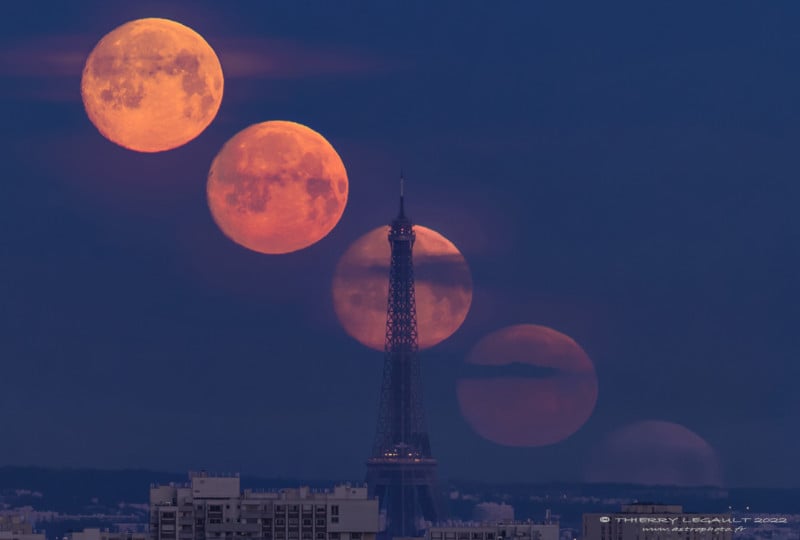Photographer Captures a Full Moon Nestled Under the Arc de Triomphe
![]()
French astrophotographer Thierry Legault captured the full Moon rising under one of the most famous monuments in Paris, the Arc de Triomphe.
A Not-to-Be-Missed Photo Opportunity
The Arc de Triomphe is an iconic Parisian landmark that is regularly shot by local and visiting photographers in different compositions. However, it’s possible that Legault has captured the most unique photo of it so far — and done so in just a single exposure — with the full Moon prominently rising between the arches.
“Such shot cannot be unplanned, the chances are infinitesimal,” Legault tells PetaPixel about the days in the run-up to the final shot. “Actually I first planned another one, two days before the Triumphal Arch, on Friday morning 15th — moonset behind the Eiffel Tower.”

Later in the afternoon after his Eiffel Tower shot, Legault took a high-speed train to go away for the Easter weekend celebrations with his family, some 400-kilometers away from Paris. The next day, while studying the lunar configurations for the months to come, he realized that the Moon would rise under the Arc de Triomphe on Sunday evening at 10:10 PM local time.
“The train back to Paris let me in the southern suburb of Paris Sunday at 20:15, letting me less than two hours to get my car, run to the Champs-Elysées and find the best place to shoot the event. Just in time!” says Legault.
“All the more that high clouds slowly came from the west — I saw them following me from the train during the journey — fortunately, they covered the Moon only a few minutes after the event!”
A Serene Moon Shot From a Busy Street
The landmark is regularly surrounded by pedestrians and traffic, so Legault had to find a composition that doesn’t obstruct the view.
“I was in the middle of the avenue, at the level of a pedestrian crossing,” he explains. However, staying exactly in the axis of the avenue would have placed the red traffic lights in the center of view of the Arch, just below the Moon.”
“I shifted to the right to have them off-center; you can see several of them slightly on the left axis,” Legault adds. “Fortunately at that time, there were few people crossing, and only one other photographer with a telephoto lens besides me.”
![]()
The grandiose shot of the Moon was a single exposure. For scenes like these, Legault generally sets exposure between 1/30 and one second, and shoots at the lowest ISO, such as ISO 100, setting for the best image quality. He often uses a sturdy tripod and a wired remote control, which means he doesn’t really need sensor stabilization.
Using Sigma Equipment for Minimal Noise
Legault’s camera of choice for the Moon shot was Sigma fp L and Sigma 135mm f/1.8 Art lens. Having used Sigma Art lenses for many years, Legault says he knows he can rely on their optical quality, seeing as “astronomers are extremely demanding with optics.”
“Last year I became interested in the fp and fp L, feeling they looked promising. I tried
them and I have not been deceived,” he says. “Their exceptionally low noise makes them perfect for low light shooting, either for short exposure like the ones with the Moon or longer exposures for deep-sky imaging.”
He shared his impressions on Facebook:
Legault also notes there are no noise reduction algorithms that affect the RAW files when shooting with Sigma cameras, unlike “some competitors,” which is essential for getting stars and bright lights free of any distortion or alteration.
More of Legault’s astrophotography work can be found on his website and YouTube Channel.
Image credits: Photos by Thierry Legault.